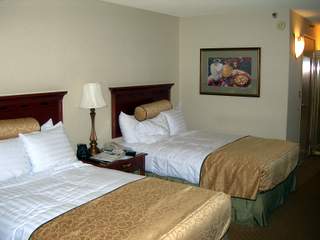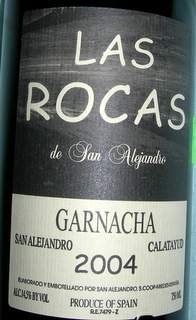I stumbled across this article on site,
Basic Juice. I love Blanquette de Limoux, and I have been meaning to write a piece on it for some time, but this article says exactly what I wanted to say in a more eloquent way! It came with an invitation to steal it. And that is exactly what I did. Thank you,
Mr. Jarvis!
What follows is "stolen" content:
Steal This Article
Editor's note: Steal this article! Whether you publish a paper, magazine, blog or scribble on the bathroom wall; fresh (& free) content is always welcome, no? Feel free to grab this article and use it to spice up your publication. Do with it what you will - so long as you mention that the original comes from The Juice. Now go forth, and copy & paste.
First in Bubbles
Picture this: You’re a 16th century monk who is lucky enough to live in an abbey surrounded by vineyards. Aside from an abundance of peace and quiet, you enjoy looking after your beloved bottles of fermenting wine in the subterranean cellar. Spring has sprung and it’s time for you and your fellow monks to find out if that special miracle has occurred for a second straight year. You and the brothers anxiously descend the stone stairs. Being the nimblest monk, you reach the bottles first and carefully pick one up. They’ve appeared again! Hallelujah and praises be. The tiny bubbles have returned. The others offer prayers of thanks, while you perform a decidedly non-pious jig. Reverence can be temporarily cast aside; this abbey is rocking with sparkling wine.
Chances are, if you had to guess at the geographic location of this historical flight of fancy, you would say the abbey was located in France’s Champagne region. That’s where bubbly was invented, right? Yet you, and about 99% of all wine enthusiasts, would be wrong. While Champagne represents the epicenter of modern sparkling wine, it was not the first region to produce bubbling wine in a bottle. Evidence suggests that this honor, albeit one borne of sheer geographic luck, belongs to the unassuming community of
Limoux in southern France.
Now how did little old Limoux come to claim the first-in-bubbly crown? While Limoux lies in the otherwise toasty south of France,
it’s situated in the Pyrenean foothills – not far from the Atlantic coast. Due to its altitude and cool sea breezes, the climate of Limoux is decidedly non-Mediterranean. In fact, the weather around this community more closely resembles the cool climate mountain villages in France’s southwest. So, what does this have to do with bubbles?
The answer is: everything.
Let’s go back to our 16th century abbey. In autumn the monks harvested Mauzac grapes, a naturally acidic grape variety redolent of very-ripe apples. The grapes were pressed and the must began to ferment. Due to the abbey’s high & cool perch, winter often arrived early, and the rapidly dropping temperatures halted fermentation. As spring arrived, the fermentation process began again. Up until the early 1500’s, wine was stored in wooden casks, and thus, carbon dioxide gas produced during this second fermentation escaped unnoticed. However, beginning in the 1530’s the monks of Limoux began wintering their wine in new-fangled glass bottles stopped with cork plugs – courtesy the nearby Catalonian cork oak forests. The monks now noticed this second fermentation as evidenced by the miraculous spring bubbles. In fact, some even hailed presence of these tasty bubbles as evidence of divine intervention by the Big Wine Maker in the sky.
Over time, bubbly from Limoux came to be called, “Blanquette de Limoux” (Blanquette means ‘white’ in the
Occitan language). This soft, creamy sparkling wine gained a global following. None other than the famous Francophile,
Thomas Jefferson, loved this wine. At the time of his death, it was discovered that Blanquette de Limoux occupied approximately 10% of Jefferson’s cellar real estate. In fact, Blanquette was the only sparkling wine T.J. kept on hand. Methinks Mr. Jefferson was on to something.
Modern Blanquette de Limoux must contain at least 90% of the traditional
Mauzac grape. This is normally blended with a little Chardonnay or Chenin Blanc. The result is a delicate, slightly sparkling wine that hovers between dry and off-dry. It’s perfect as an aperitif or at the table with Sunday brunch. When purchasing Blanquette de Limoux, it pays to inspect the label. Another sparkling wine produced around Limoux is called, “Crémant de Limoux.” This wine is generally more similar to modern sparkling wines such as Cava or French bubbly from regions outside of Champagne. Crémant de Limoux also contains higher proportions of Chenin Blanc and Chardonnay. In other words, while tasty, it certainly isn’t as unique as Blanquette.
If you’re interested in introducing your tongue to the soft tickle of Blanquette de Limoux, you might have to do some searching. Fortunately, while relatively scarce, this wine is usually quite affordable.
A few Blanquettes to bag:
Domaine Collin Blanquette de Limoux (
$12-$15)
Le Berceau Blanquette de Limoux (
$15-$17)
Bernard Delmas Blanquette de Limoux (
$17-$19)
Once you get your Blanquette home, take a moment to look at the inviting bubbles and picture that 16th century monk - amazed that divine providence touched his humble bottle of wine. Cheers.



























